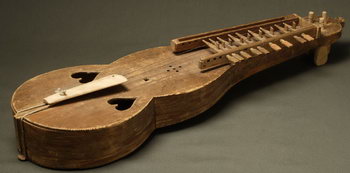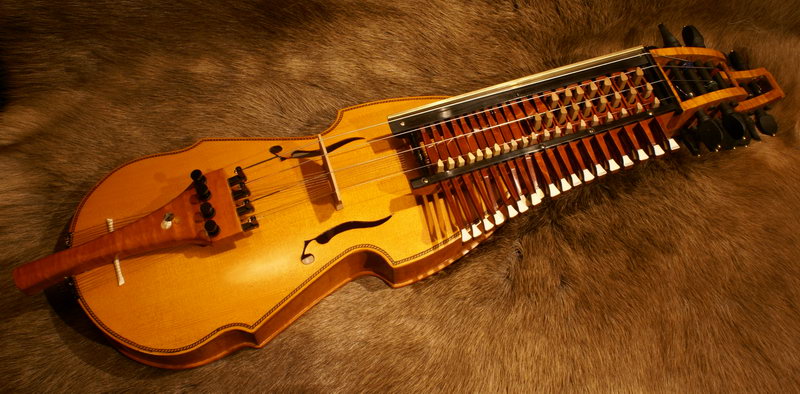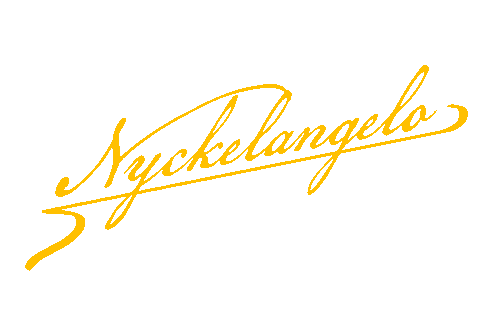
The open peghead with all those pegs caused me most headache to realise on a nyckelharpa, since it literally at right angles to the conventional harpa's head. The enormous tractive power of the strings make this type of peghead unsuitable on a nyckelharpa. Please mind the neck and head of a nyckelharpa is for good reasons made out of one piece of wood. In the best case scenario it would end up as a very vulnerable head, so I had to think of something to shift the tractive power.
After a couple of failed experiments it became visible that the resonancestrings had to run underneath the keybox. Doing this made the open peghead a feasible idea. It also gave room to narrow down the width of the neck from 10 to only 8 centimeters. This doesn't only improve the looks of the instrument, but also the playability of it!
t
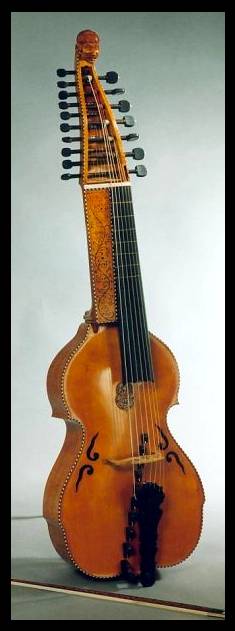
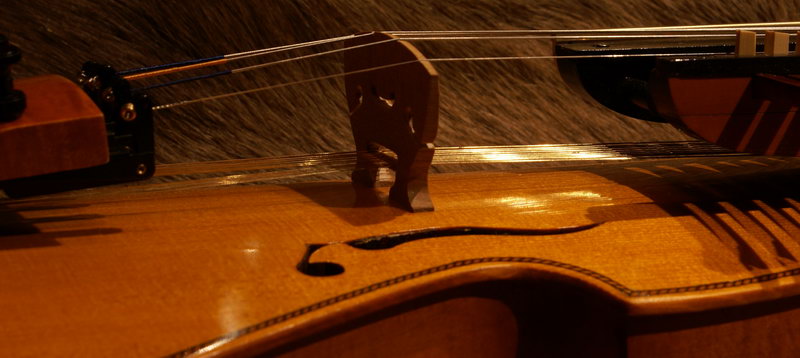
If you already play nyckelharpa you also have to get used to the shortened scale of the Nyckelangelo. It is only 34 instead of the usual 40 centimeters. I have chosen for the rather unusual tuning F-C-G-D. This to make this a real baroque nyckelharpa, since this is a perfect tuning for the widely available baroque sheetmusic. But ... it is also perfect for most Western European folkmusik, modern music en great for second voice or even better the solo when played together with a 'normal' nyckelharpa.
The Nyckelangelo looks quite massive, but is with only 2 Kilo a very pleasant instrument to play. The ivorine engraved keyboardplate adds to the joy.
The best of all is that it just sounds like it looks like; powerfull, clean and bright. It has bit the sound of a Viola d'Amore, but hasn't lost the typical rough edge that we all like of the nyckelharpa. Mission accomplished, after all I wanted to build a nyckelharpa as it could have been in 1725!
Venlo, 24-12-2008
Nikolaj Marks
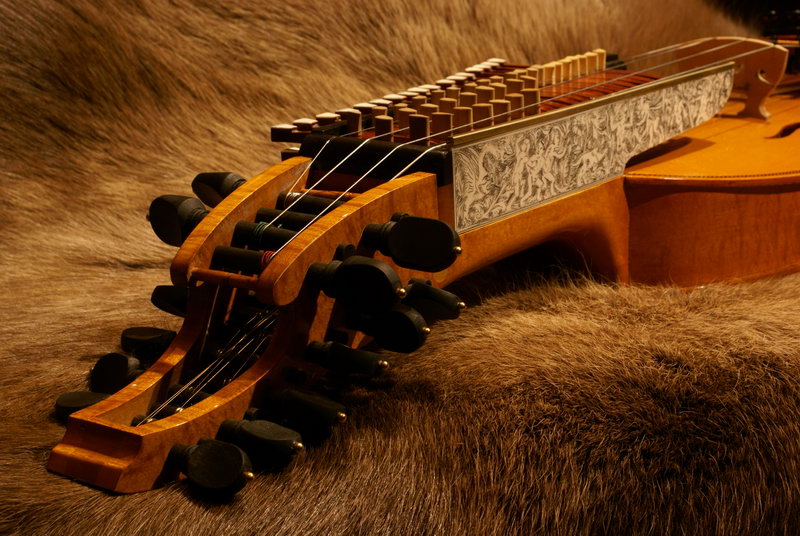
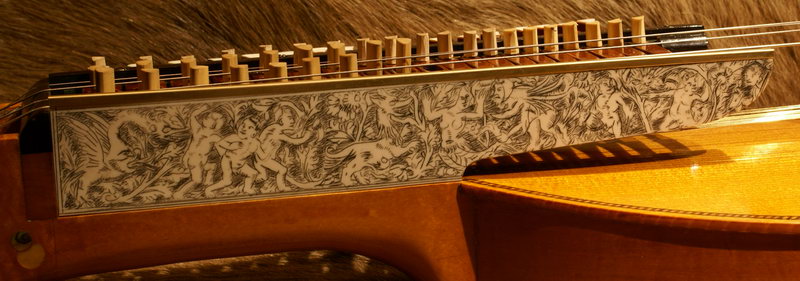

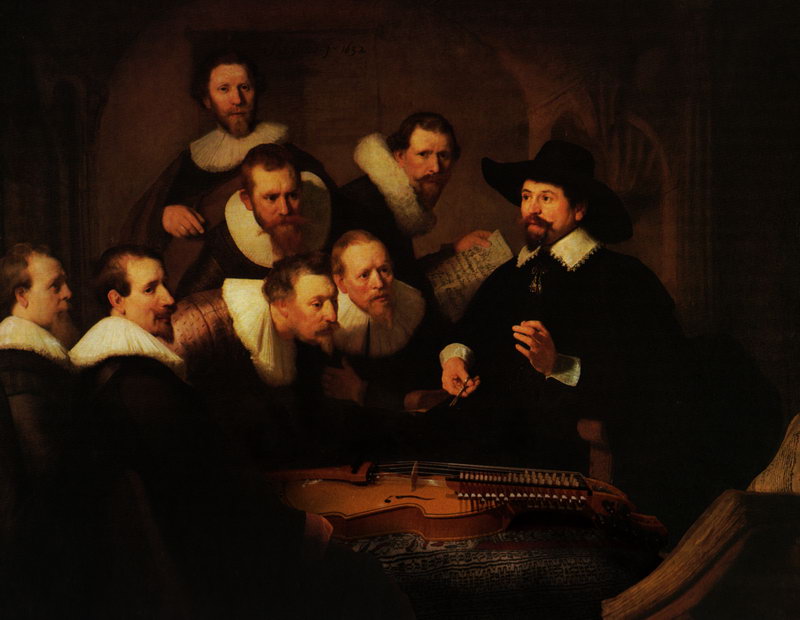
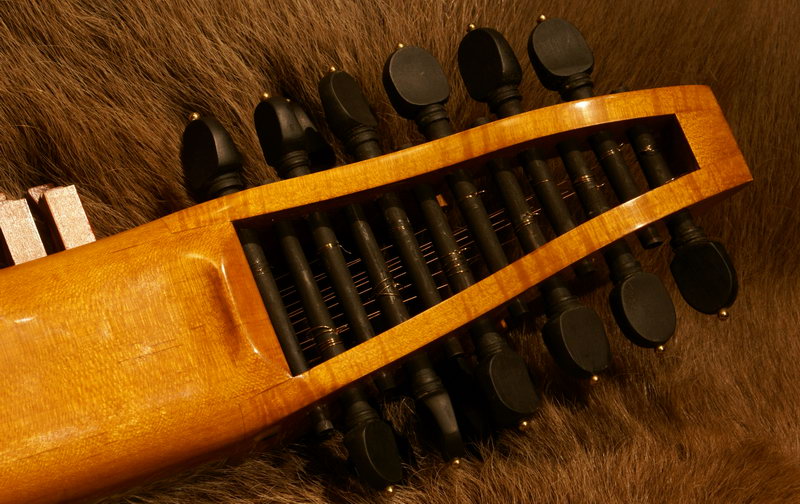
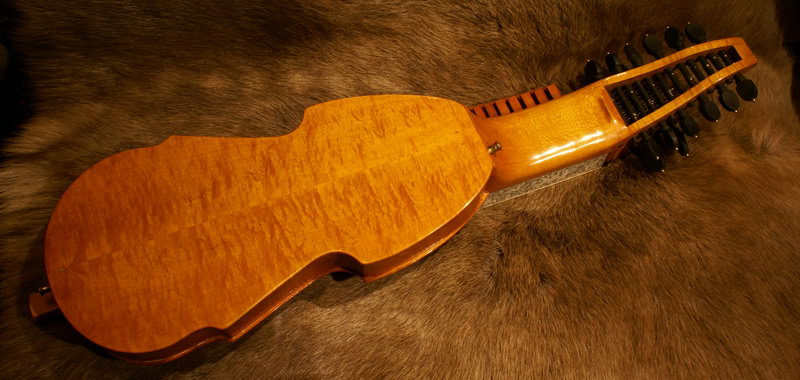
The nyckelharpa has always been a typical Swedish traditional folkinstrument, but since about 20 years it gains ground to the rest of the world. The sound and mystical appearance attracs many musicians, not only those who are interested into folk.
Anyway, there has never been a chromatic nyckelharpa in the 18th century, not at all in France! I developed this harpa after a visit at the Musical Instruments Museum in Brussels-Belgium. After admiring all those lovely instruments of the 17th and 18 century I wondered what a nyckelharpa would have been like if it was a popular instrument in the France of the 18th century. Not only as for its appearance, but also for its sound.
At first I only wanted to make some designs on paper for my own pleasure, but little and little this idea turned out to be interesting enough to make this prototype. After all there are many players who use their harpa also, and even mainly for renaissance and baroque music. This was an extra goad for me to give this idea
